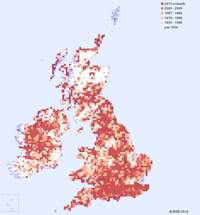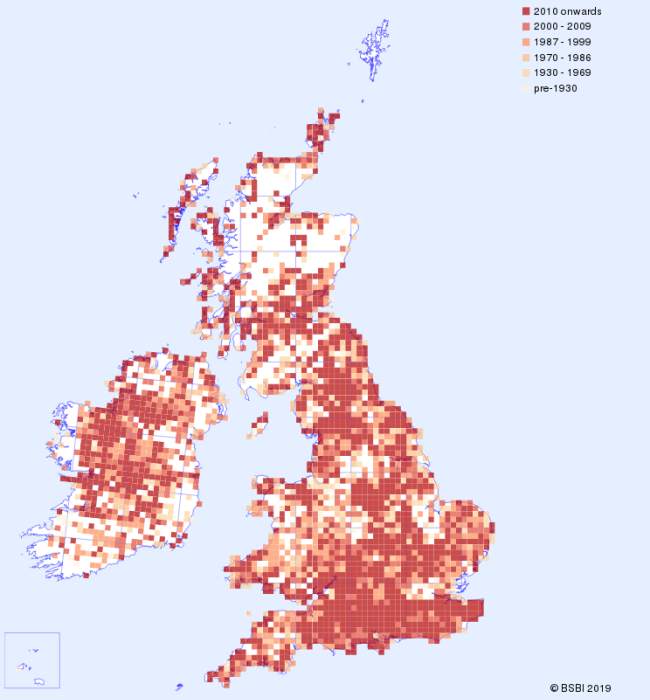The Common Twayblade is, as its name suggests, one of Britain's commonest and most widespread orchids. Several factors contribute to the success of this plant: it is extremely long-lived, often showing the remains of numerous flower spikes on a single rhizome. Some records from Scandinavia suggest that plants can persist for up to 40 years. The plant is also tolerant of a number of habitats and so is less affected by the habitat destruction that has adversely affected so many of our other wild orchids. Common Twayblades grow on limestone pavement, in open moist woodlands, in sand dunes, on roadside verges and quarries and in sandpits - to name a few of the places where these orchids can be found, often in large numbers. An overall green colouring can make it difficult to spot, and non-flowering plants are common. Identification is relatively straightforward: the pair of opposite-facing large oval bright-green leaves close to the base of the stem are the confirmatory feature to look for. Common Twayblade flowers from late April until late August or even later in the exteme north. This orchid is very common in southern England and also fairly widespread in Scotland except for the Highlands, but it is absent from Shetland. In Europe, Common Twayblade is found from Scandinavia in the north and as far south as the Mediterranean region.
| Distribution Map | Key Features | |
 |
Records for the Common Twayblade from BSBI are shown on the map with most recent in front. (Hover the mouse over the small map to expand it.) |
Plant: 10 to 75cm tall. Stem thick and whitish at the base and green to brown higher up. There are 2 to 3 small sheaths at the base of the stem. |
Image Gallery for Common Twayblade Neottia ovata
| Pollination | Taxonomy & Hybrids |
Pollination is carried out by a variety of small insects including sawflies, beetles and wasps, which are apparently attracted by the unpleasant-smelling (to us) nectar secreted by the plant. The pollination mechanism used by the plant is very specific and has been the subject of much interest and study. |
The specific name ovata means 'egg-shaped' and refers to the two large leaves. |
Articles about Common Twayblade in JHOS
